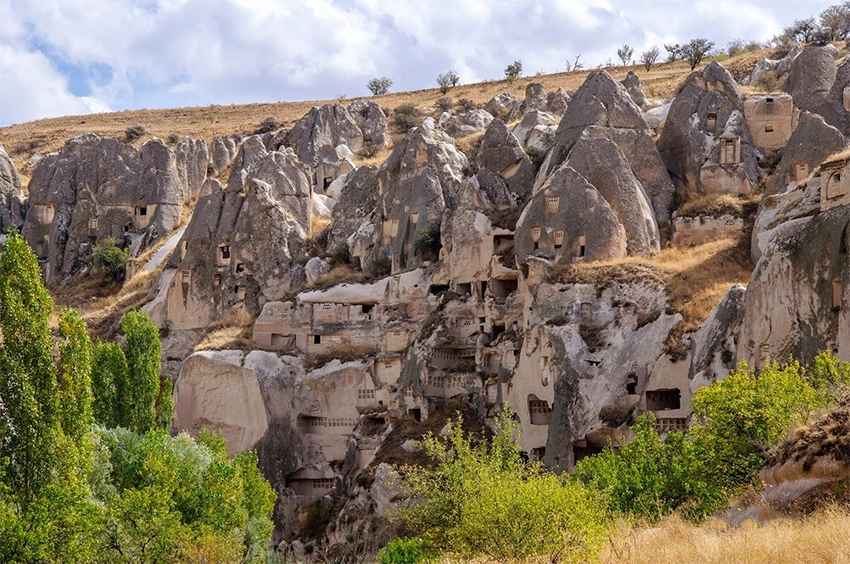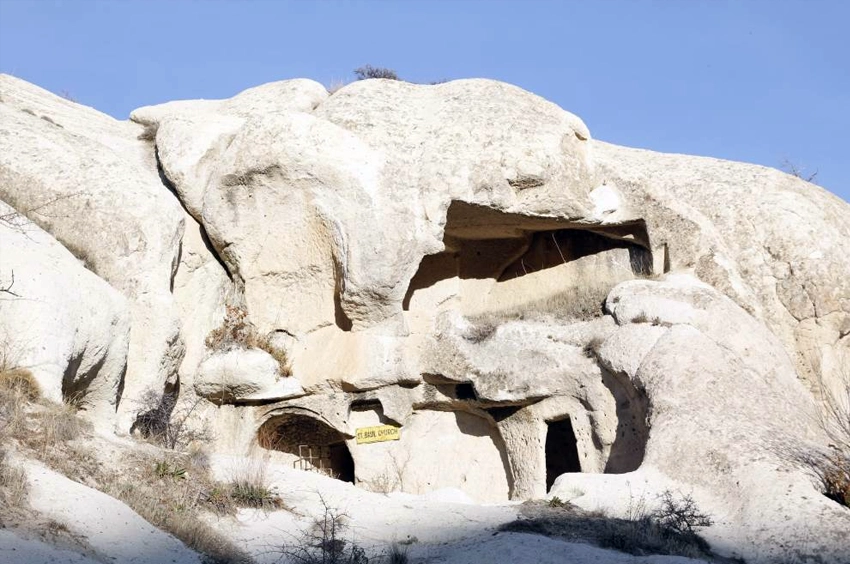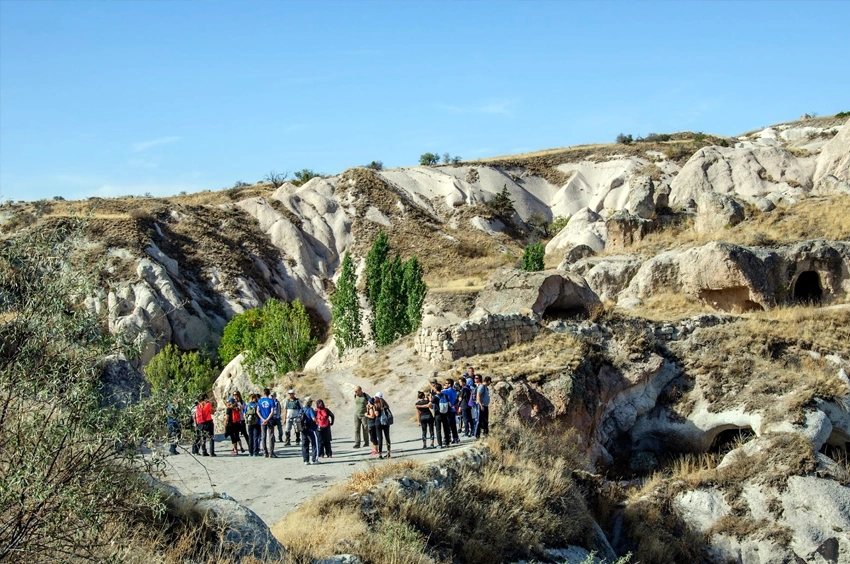Gomeda Valley
Gomeda Valley (“Little Ihlara” and Üzengi Valley – Mustafapaşa)
Location and Overview
Gomeda Valley lies west of Mustafapaşa (Sinasos), near Ayvalı village, about 2 km from the town center. Its narrow and deep canyon-like formation resembles Ihlara Valley, earning it the nickname “Little Ihlara.” Locals also call it “Devil’s Stream” or “Thriller Valley,” since a horror movie was once filmed here.
The valley stretches for about 4 km and merges with Üzengi Valley to form a 6 km hiking route. Along the Üzengi Stream, pear, apple, and walnut trees line the lush valley floor. At the entrance, the “Gomeda Ruins” reveal remnants of one of the region’s oldest settlements. Hundreds of pigeon houses carved into the cliffs, some rising 6–7 stories high, dominate the landscape, especially where the two valleys meet.
Though Gomeda has fewer fairy chimneys than other valleys, its quiet atmosphere and historical depth make it a hidden gem for explorers and photographers.

Historical and Monastic Heritage
During the Roman and Byzantine periods, Gomeda was both a settlement and a religious hub. Sources mention a Greek village named Kanavuria with two churches, two necropolises, and an underground city.
The most prominent monument is Timios Stavros (Holy Cross) Church, locally known as Alakara Church, built in the 10th century and enlarged in the 19th. Another highlight is Saint Basilios Church, dedicated to Cappadocia’s Saint Basil, with 9th-century frescoes and connections to the “Stairway Church.” Other nearby chapels, such as the Hacı İsmail Dere Churches, further show the valley’s extensive Byzantine monastic network.

Churches, Caves, and Frescoes
Alakara Church: A single-apse, vaulted church with faded frescoes of Christ Pantocrator, the Apostles, the Virgin, and saints.
Underground City: Near Alakara Church. Small entrance leading to rooms, tunnels, a sliding stone door, and a latrine once used as a refuge.

Saint Basilios Church: Mid-valley. Two-aisled, two-apsed, with a large carved cross and decorative patterns. Its frescoes reflect Iconoclastic influence with more symbols than figures.
Stairway Church (Merdiven Kilise): Accessible via steep rock stairs, notable for its 9th-century frescoes.
Simple cells, cross-marked rooms, and chapels carved into the cliffs were likely used as hermit retreats.
Natural Landmark: Kaya Kemer
One of the valley’s striking geological features is Kaya Kemer, a natural rock arch bridging Bey Dere. In the afternoon sunlight, beams filter dramatically beneath the arch, making it a favorite spot for photographers.

Hiking and Photography Experience
The trail usually begins in Mustafapaşa, with signs leading to the valley entrance. The path follows Bey Dere stream, flat and easy to walk. Spring and autumn are the best seasons. At the junction with Üzengi Valley, massive pigeon houses and white-painted cave entrances stand out.
The route ends at Üzengi Valley, where a natural mineral spring (Üzengi İçmecesi) flows a refreshing stop for hikers. For photographers, top highlights include Kaya Kemer, the pigeon houses, and Saint Basilios Church. Drone shots over the valley junction capture breathtaking views.

Visitor Information
- Access: Free, open 24/7. The entrance is 2 km from Mustafapaşa. Park near the fountain by the entrance and start walking.
- Transport: Reach Mustafapaşa by car, taxi, or minibus from Ürgüp.
- Facilities: No cafés or restaurants in the valley bring water and snacks.
- Tips: Wear sturdy shoes, carry water, and be cautious of uneven ground or loose rocks.



